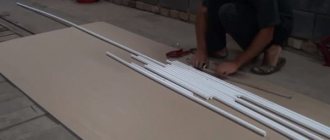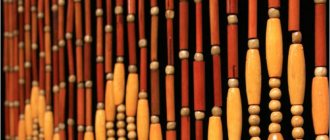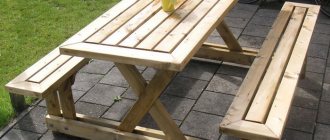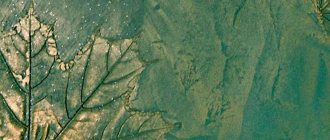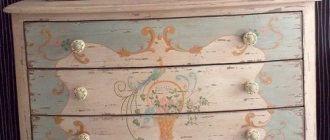The face of any house is its facade. Today, special attention is paid to facade design. Designers and architects around the world use various decorative materials to decorate the facade of their projects: from natural to artificial. One of the most popular is considered facade stucco molding is a wonderful and simple way to individualize your home, turn it from an ordinary boring building into a small palace, castle or fortress.
Properly executed decoration with decorative facade stucco looks great on any building
What is façade stucco?
Facade stucco is actively used for the decorative design of various buildings: from private cottages to administrative, city, shopping, facilities and even business centers. Attractive appearance, original design, unusual design - this is what this decorative product gives to those who decide to use it.
Modern stucco meets all established quality standards that apply to materials of this kind.
In addition to decorative qualities, it has a number of undoubted advantages. Among them:
- Excellent thermal insulation;
- Neutralization of cold bridges;
- Mechanical protection of corners from chips and climatic influences;
- Masking qualities (you can hide various electrical wires and pipes).
In addition, with its help you can easily hide visible building defects, architectural or construction flaws.
What materials are they made from?
At its core, façade stucco is embossed decoration on the outside of buildings. Manufactured from gypsum, concrete, polyurethane, etc. Let's look at the most popular variations in more detail.
Concrete stucco
Architectural concrete is used to make structures of any shape.
Concrete stucco or architectural concrete is a material that will last for centuries. All builders and architects know about its incredible strength and durability. That is why concrete stucco is actively used to decorate various facades. As a rule, lightweight concrete stucco, based on polystyrene concrete, is used to decorate the facade of buildings. Such products do not create a large load on the foundation of the building, but have all the characteristic performance qualities.
The table below presents the main disadvantages and advantages of concrete stucco.
| Advantages | Flaws |
|
|
Fiberglass molding
Fiberglass House Facade
Fiberglass or fiberglass stucco is also widely used in modern construction. The main highlight is the unusual composition, where in addition to natural components there are also synthetic ones (which improves performance characteristics and makes it more cost-effective to use).
The undoubted advantages include:
- flexibility;
- ease;
- ease of installation;
- beautiful appearance;
- possibility of installation on objects of any size: from old historical buildings to modern high-rise buildings;
- does not require maintenance or reconstruction work;
- high light transmittance (the product is as close to the glass as possible);
- environmental friendliness and non-flammability.
The disadvantages include fragility, lack of resistance to mechanical damage, and the need to apply an additional protective layer. The production of fiberglass moldings is done in many ways, including vacuum infusion, winding, hand molding, spraying, autoclave molding, pressing, etc.
Gypsum decor for facade
Facade gypsum stucco molding in the Greek style
Gypsum decor is often . Thanks to its many unique qualities, this material is actively used not only in the field of construction and architecture, but has also found wide application in medicine, interior decoration, landscape design, and much more. etc.
The main pros and cons of gypsum stucco for facades are listed in the table below.
| Advantages | Flaws |
|
|
Stucco molding from polystyrene foam, as well as from foamed polyurethane
An example of a façade decorated with stucco molding made from polystyrene foam
Just a few decades ago, an amazing building material appeared on the market, which immediately appealed to many decorators. Polyurethane stucco has a number of unique qualities . Firstly, it is a very light material that is easy and pleasant to work with. It does not attract dust and also does not absorb any odors. Secondly, polyurethane is resistant to various mechanical damage. Thirdly, the polyurethane product does not deteriorate under the influence of fungi and bacteria. Fourthly, it is ideal for decorating the facade of “light”, small buildings. And the fifth, but not the last plus is low cost (in relation to gypsum, polyurethane is a more budget option).
But, despite the impressive list of advantages, polyurethane stucco has significant disadvantages:
- porous structure;
- grainy surface;
- the difficulty of making stucco molding of the correct shape (one mistake, and the polyurethane foam will shrink);
- installation is carried out using a special glue, which significantly reduces the strength and durability of the architectural structure.
The conclusion is this: for a small budget and low-rise buildings, polyurethane stucco is ideal. For larger objects, the best option would be gypsum stucco.
Main types of facade stucco molding
Even an ordinary building decorated with facade stucco acquires an exclusive, attractive appearance. Today, the following types of stucco for the facade are distinguished:
- pilasters;
- columns;
- arches;
- moldings;
- cornices;
- bas-reliefs;
- decorative panel;
- handrails;
- balustrades, etc.
The choice of facade stucco molding is huge
and this list is systematically updated with new terms and varieties. Pilasters and columns are often used to decorate entrance areas. The main condition is that the products must rest against the surface (they are mounted in a suspended state extremely rarely).
Attention! Installation of columns and pilasters should be carried out exclusively under the supervision of professional builders.
Arches, moldings and cornices are necessary to decorate window and door openings. Structures can have different shapes and designs. Installation of moldings and cornices does not require special power costs and therefore can be carried out independently. But to install the arch, you need to invite a specialist.
Bas-relief is a type of sculptural convex relief. Its peculiarity is that the image protrudes above the background plane by no more than ½ of the total volume. As an independent architectural decoration, it can be used to decorate pylons, walls, pediments, friezes, metopes, vaults and capitals. Stucco balustrades and handrails are used as fencing for balconies, bridges, and central entrance doors. As a rule, the most durable materials are used in the manufacture of balustrades: concrete or gypsum.
Main entrance and staircase with balustrade
Stucco molding in a modern interior
Stucco molding in the interior of an apartment or house gives the decor a luxurious look, makes it original, but at the same time not devoid of grace. The decor allows you to create special visual effects, for example, an infinity ceiling or a deepening wall. Various patterned strips, covering cracks and joints, correct finishing errors and effectively complement the line of connection between different materials and surfaces. Hidden lighting is sometimes placed behind molded ceiling plinths.
Ceiling chandeliers are framed using a rosette of a suitable shape with a pattern. Decorative trims, medallions, garlands allow you to decorate niches, decorate the surfaces of walls, doors, windows, arches or mirrors.
Numerous examples of stucco in the interior are suitable for inspiration, but it is better to select the layout and set of decor individually, taking into account the features of the layout and furniture arrangement.
Stucco molding is a great way to create an imitation of a coffered ceiling, but at the same time cheaper, lighter and more elegant. Openings decorated with plaster stucco will look more interesting. Often modern interiors are decorated with bas-reliefs.
A professional artist working with plaster will help bring any idea into reality, creating three-dimensional decorative elements or full-fledged panels. With the help of stucco it is easy to emphasize significant elements of the interior. Wall decor with 3D 3D panels is becoming increasingly common.
When selecting design options for a modern interior, we quite rarely consider such a finishing option as stucco, since we consider it suitable only for classic interiors. At the same time, this very beautiful and effective method of decoration fully complies with the standards of modern styles. Beautiful stucco molding in a modern interior. 35 photos of design ideas. Even in interiors whose decoration meets the requirements of minimalism or high-tech, stucco on the wall in the interior, if used correctly, can become a detail that is perceived no less organically than glass panels or metal furniture.
Which material is better to choose?
The building materials market offers a huge selection of high-quality building materials from well-known domestic and European brands. Polyurethane stucco is in particular demand. Why is she so popular? It's simple!
- low price;
- high strength;
- aesthetic appearance;
- ease of manufacture and installation.
All these qualities underlie the popularity of polyurethane stucco for facades. It is fair to note that it is polyurethane that makes it possible to produce extremely light stucco molding, which is ideally fixed to the base using simple adhesives. The product is perfect not only for the exterior, but also for decorating the interior of the house.
The interior with stucco elements is associated with luxury and wealth
Some experts argue that polyurethane is less durable than gypsum. However, with proper manufacturing and strict adherence to installation and operation standards, the product will serve faithfully for many years without loss of aesthetic qualities. In other words, polyurethane stucco molding is a budget decorative material that is available to almost 100% of consumers.
Features of creating stucco molding from gypsum
The creation of beautiful gypsum decorations for walls and entrance areas is carried out on the basis of a special alabaster powder, which is mixed in a certain proportion with water, gradually introducing into the composition a special filler and a coloring pigment (the latter is added if necessary).
The setting time of the gypsum mixture is 5-8 minutes. Complete drying occurs in 20-25 minutes. That is why the molding of plaster jewelry should be done as quickly as possible. Gypsum grades from G5 to G25 (necessarily without impurities) are perfect for stucco molding.
When making a standard composition of gypsum dough, ordinary gypsum powder and 30-40% cold water are used. It is strictly forbidden to pour water into the powder. Thus, the mixture becomes unsuitable for molding and obtaining high-quality stucco for the facade. Gypsum carefully and gradually add water, while mixing until a homogeneous consistency is obtained. Next, the mixture must be poured into a specially prepared form. Preparing the mold consists of treating the inside with a special substance, for example autosol, grease or stearin, which is diluted with kerosene.
Making gypsum stucco molding
Plaster casting can be made by hand using several different variations and techniques.
- If the product is simple and does not require special skills, then the contours of the future creation are drawn using a pre-created stencil. Afterwards the gypsum mass is applied, it is leveled and rubbed. If something extra remains, then unnecessary elements are cut off. If necessary, the procedure can be repeated several times.
- The gypsum solution is applied to the location of the finished product. After drying, a figure is created from plaster that is similar to the prepared drawing.
- If the customer wants to receive a complex product, then it is created according to prepared forms. Forms can be made of various materials - wood or plastic, sometimes concrete is used. Before starting to work with plaster, the mold must be greased with a slurry of dissolved soap. Then pour plaster, but not thicker than 1 centimeter. Wait until this layer of plaster hardens. After this, you can apply the next layers. After the figure has frozen completely, it should be freed from the mold. This should be done carefully so as not to damage the finished product.
Plasticine will also become indispensable when working with plaster. You can sculpt anything from this material, changing the shape of the workpiece several times. The figure is made from plasticine either completely or its individual parts. After the stencil is finally created, it is coated with a plaster solution. The plaster is absorbed into the recesses in the plasticine, so you should apply the plaster with a brush. Once the initial layer has dried, you can apply the rest. The number of layers depends only on the complexity of the elements of the figure.
After 1 hour, the form can be removed. Only the plasticine model will remain. If large figures are created, then the plasticine model should be reinforced with a copper mesh. The inside of the mold can be coated with furniture varnish. It is colorless, so it will not spoil the color scheme of the product.
On a note! When the gypsum solution is poured into the mold, it is important to prevent the formation of bubbles. You need to shake the product. Dry only at a temperature not less than +160C. The process cannot be accelerated. The product will be deformed.
Sandpaper will help get rid of imperfections
To paint gypsum, water-based paints are used, but before this the product is coated with several layers of primer. Texture can be created using sponges, fabrics or other materials.
We recommend: Do-it-yourself patio at the dacha
Advantages of gypsum decor
Undoubtedly, gypsum is the most durable and durable material used to create decorative stucco molding.
Among its advantages:
- excellent appearance;
- hygroscopicity;
- environmental friendliness;
- simple repair;
- affordable price;
- does not burn;
- staining is possible.
The problem of increased hygroscopicity is solved thanks to special additives and plasticizing substances, which not only reduce porosity, but also increase the strength and thermal conductivity of the gypsum mixture.
High-strength gypsum stucco molding will withstand more than one century.
Gypsum decor can be made in various interior styles : from classic and antique, to Gothic or modern (art, nouveau, loft, modern).
What you need for work
One of the advantages of creating plaster elements is accessibility. Everything you need for the creative process can be easily found in relevant (construction, art) stores:
- A level table of sufficient size. Its surface must be leveled; the slightest tilt can negatively affect the quality of the future product.
- Polyethylene film for covering the work surface and surrounding objects, because the production of gypsum stucco molding is associated with the release of a large amount of dust.
- Tools: large and small spatulas, a pair of knives - wide and narrow, a measuring device, a measuring cup, brushes of different sizes.
- Construction plasticine for creating models. It holds its shape better and is not as sticky as regular one.
- Gypsum and cement powder.
- PVA construction adhesive, silicone and a gun for applying it, silicone oil.
Their acquisition does not require large investments, so anyone can try their hand at this field.
Rules for installing facade stucco molding from gypsum
Installation of facade stucco molding from gypsum is carried out according to the following algorithm:
- Leveling and preparing the surface (small roughnesses are sanded with sandpaper, large ones are puttied, then sanded);
- Priming the leveled surface (deep penetration priming solutions can be used);
- Marking the place where the gypsum decor will be installed (carried out on the basis of the established design project);
- Preparation for installation (grinding the back side, moistening with a spray gun);
- Installation of an additional fastening system (necessary when installing large-sized elements, such as columns or pilasters);
- Fastening involves direct installation of decorative elements using self-tapping screws, screws, anchors or an adhesive base (the method of fastening depends on the dimensions and weight of the stucco molding);
- Elimination of seams and joints (cracks and joints formed during work must be removed using a gypsum mixture).
Delivery and installation of plaster decorative elements may sometimes require heavy equipment
Technology for fastening decorative elements
Installation of stucco must be carried out in accordance with established building codes and standards. Remember, the aesthetics and durability of the building facade directly depends on the quality of fastening of decorative elements.
Installation of stucco molding is carried out according to the following algorithm:
- Mark the location of decorative elements on the facade. Be sure to consider the load-bearing capacity of the walls. If the facade is made of inexpensive and fragile building materials, then it is better to use lightweight stucco.
- Preparation of the facade (cleaning from dust, roughness, if necessary, the presence of deep holes, unevenness - puttying and priming the walls);
- Repeat, but more accurately mark the fastening points. Pay special attention to the position of the elements. Be sure to use a level.
When installing heavy facade decor, special equipment may be required to lift the decor
It is important to watch the corners carefully. Each angle must be 900. Otherwise, serious problems may arise during installation of the side parts.
- Installation should begin with elements that do not have a stop (window sills). Subsequently, other parts will be installed on them, thereby making the overall structure more durable.
- Prepare the adhesive base. It is acceptable to use a compound for ceramic tiles or any other. Dilution of the adhesive mass should be carried out strictly according to the manufacturer’s recommendations.
- The glue should be applied not only to the inside of the stucco molding, but also to the wall. When fixing, it is necessary to press the product against the wall as tightly as possible. The glue that goes beyond the edges must be carefully removed with a spatula (to increase the strength of the fastening, the structure can be supplemented with dowels).
- The resulting wide cracks can be sealed with gypsum mixture or polyurethane foam.
How to prepare high-quality gypsum mortar
Making stucco molding requires high-quality materials and adherence to technology, otherwise the result will be a fragile product that will not withstand even minimal loads.
Gypsum is poured into a container with water in a ratio of 0.7 parts to 1, and about half an hour is given for the natural settling of the powder. This will prevent lumps and air voids from forming. Then the materials are thoroughly mixed with a drill with a special attachment until the consistency of sour cream. However, you should not get carried away, otherwise it will lead to thickening, and the work will have to start all over again.
If you add a little PVA to the water, the solution will become more plastic, which will have a beneficial effect on its strength characteristics. To prevent future plaster molding from sticking to the mold, the matrix is thoroughly coated with silicone grease before pouring. Light shaking movements during the process will remove excess air from the mixture.
After complete filling, the base is leveled with a spatula and left for 20 minutes, after which it is removed and sent to dry, where it remains for about a day.



